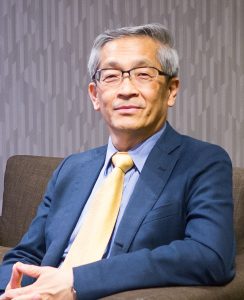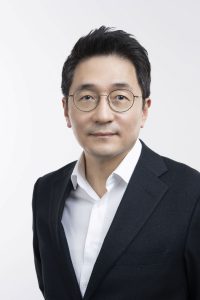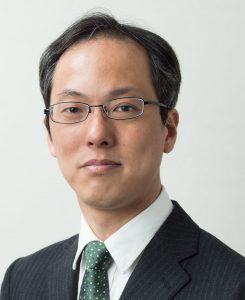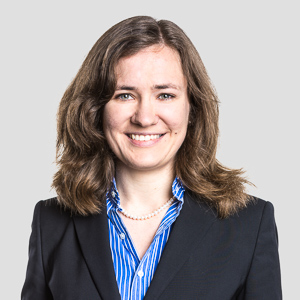Keynote speakers
We have five keynotes scheduled.

Industrial AI-Augmented Prognostics
for Highly Connected and Complex Industrial Systems
Prof. Jay Lee
Univ. of Maryland College Park
Industrial AI, Big Data Analytics, Machine Learning, and Cyber Physical Systems are changing the way we design product, manufacturing, and service systems. It is clear that as more sensors and smart analytics software are integrated in the networked industrial products, manufacturing, and maintenance systems, predictive technologies can further learn and autonomously optimize productivity and performance. This presentation will give an introduction about Industrial AI for smart prognostics systems of highly connected and complex industrial systems. First, Industrial AI systematic approach will be introduced. Case studies on predictive metrology and advanced Stream-of-Quality (SoQ) technologies for different industrial systems including high-volume manufacturing, networked EVs, and wind turbine systems, etc. will be given. In addition, issues on data quality for high performance and real-time data analytics in future predictive manufacturing and maintenance will be discusse.
Dr. Jay Lee is Clark Distinguished Professor in the Mechanical Engineering of the Univ. of Maryland College Park. He is also the founding director of Industrial AI Center (www.iaicenter.com ). Previously, he served as Ohio Eminent Scholar, L.W. Scott Alter Chair, and Univ. Distinguished Professor at Univ. of Cincinnati, and was the founding director of National Science Foundation (NSF) Industry/University Cooperative Research Center (I/UCRC) on Intelligent Maintenance Systems (www.imscenter.net) in partnership with over 100 global company members. IMS was selected as the most economically impactful I/UCRC in the NSF Economic Impact Study Report in 2012. He mentored his students won first place in the PHM Data Challenges five times since 2008 as well as developed a number of start-up companies including Predictronics through NSF iCorp in 2013. He was on leave from UC to serve as Vice Chairman and Board Member for Foxconn Technology Group during 2019-2021 to lead the development of Foxconn Wisconsin Science Park (~$1B investment) in Mt. Pleasant, WI (www.foxconnwiofficial.com). In addition, he advised Foxconn business units to successfully receive five WEF Lighthouse Factory Awards since 2019. He is a member of Global Future Council on Advanced Manufacturing and Production of the World Economics Council (WEF), a member of Board of Governors of the Manufacturing Executive Leadership Council of National Association of Manufacturers (NAM), Board of Trustees of MTConnect, as well as a senior advisor to McKinsey. Previously, he served as Director for Product Development and Manufacturing at United Technologies Research Center (now Raytheon Technologies Research Center) as well as Program Director for a number of programs at NSF. He was selected as 30 Visionaries in Smart Manufacturing in by SME in Jan. 2016 and 20 most influential professors in Smart Manufacturing in June 2020, and received SME Eli Whitney Productivity Award and SME/NAMRC S.M. Wu Research Implementation Award in 2022. His new book on Industrial AI was published by Springer in 2020.

How is Industrial AI Transforming Manufacturing Industry?
Prof. Byeng Dong Youn
Seoul National University and ONEPREDICT INC
Every industry has pain points in managing its assets risk free. Out of several pain points, first, industry workflow still requires a lot of manual and labor-intense tasks. Second, industrial asset management highly rely upon its domain experts who are changing roles or exiting the company. With the lack of availability of domain experts, factories will face the problem of not being able to respond to the field issues appropriately and rapidly. These pain points can lead to reduced reliability, inferior quality, low productivity, and low level of safety under extreme operating conditions.
Prognostics and health management (PHM) can enable disruptive innovation in industries by providing real-time insights into the health and performances of critical industrial assets. This can help companies to optimize maintenance schedules, maximize productivity, and improve safety and efficiency. This talk will present industrial needs and associated pain points, several best use cases of PHM technology and their business impact. It is believed that predictive analytics and prescriptive decision-making can solve the industrial pain points. Predictive analytics is the practice of analyzing real-time data with domain knowledge, exploratory data analysis, and machine learning. This practice can help well informed decision making by providing additional insightful features related to machine health and performances. Subsequently, prescriptive decision-making requires the digitalization of domain knowledge. And it offers key functions like root cause analysis and recommended actions. In the end, several best use cases will be presented with their business impact and how disruptive innovation can be achieved.
Professor YOUN is a professor of mechanical engineering at Seoul National University (SNU), the founder and CEO of onepredict inc., the fellow of the PHM Society, and the former President of the Korean Society of PHM. Before joining SNU, he was a professor of mechanical engineering at the university of Maryland, College Park. He has served as a technical advisory fellow of Samsung Electronics, Hyundai Motors, LG Electronics, and LG Energy Solution. He has more than 500 peer-reviewed publications (over 180 SCI journal articles) and one textbook (Springer), ‘Engineering Design and Uncertainty and Health Prognostics.’ He also serves as a Senior Editor of Structural and Multidisciplinary Optimization (SMO). His dedication and efforts in research and development have garnered substantive peer recognition resulting in a member of the National Academy of Engineering of Korea (NAEK), the Citation of the Prime Minister (2019), the World’s Top 2% Scholar by Stanford University (2020), etc.

Prediction of the Movement of a Landslide for the Early Warning System Against Disaster in Japan
Prof. Katsuo Sasahara
Kochi University
Landslide disasters cause serious damage not only to mountainous areas but also to rural areas due to heavy rain, especially during the summer season in Japan. Due to these conditions, a sophisticated early warning system against landslide disasters has been developed in Japan. This system depends mainly on the judgement of an onset of a landslide using the rainfall threshold in an area. It was established based on measured rainfall data at disaster sites, but it cannot reflect the topographical, geological or geotechnical aspects of an individual slope. Displacement measurements on a slope can contribute to predicting the failure or behaviour of the individual slope. The slope failure time predictions are based on the creep theory of soils with primary, secondary and tertiary creep. A linear relationship between the velocity and acceleration of the displacement on a logarithmic scale was found and utilized for the prediction of the failure of a soil. The actual behaviour of landslides is first introduced in this presentation. Then, the difference in creep between soil and metal and the methodology of the predictions are explained. The problems to be solved are also discussed for the further utilization of slope monitoring research in the conclusions.
Professor Katsuo Sasahara is a highly distinguished individual with an extensive professional experience and commitment to the field of geotechnical engineering. He holds the prestigious position of President of Japan landslide society, which exemplifies his expertise and knowledge in the field of landslide prevention and control.
Prof Sasahara has a Master’s degree in Agriculture from Kyoto University in 1989 and later a Doctoral degree in Agricultural Science from Kyoto University in 2001. He has had an illustrious career that spans over three decades. He currently holds the position of Professor at Kochi University, where he has been serving since 2005. Prior to that, he worked as a Senior Researcher at the Public Works Research Institute (Independent Administrative Agency). In that role, he was responsible for Research and Technical Development for Erosion Control in Mountainous Area. Before his stint at the Public Works Research Institute, Prof Sasahara was the Deputy Director of Erosion Control Department at River Burau, Ministry of Land, Infrastructure, and Transport, Japan from 2001 to 2004. During this time, he coordinated an International Cooperation Project for Erosion Control Engineering and established Landslide Warning Alert for Early Warning at the national level. Prior to this role, he had worked as a Senior Researcher at Public Works Research Institute, Ministry of Construction, Japan from 1999 to 2001, where he conducted research and Technology Development for Watershed Management.
Prof Sasahara’s professional experience extends beyond Japan, as he has also worked as a Japan International Cooperation Agency (JICA) Expert at the Department of Water Resources Development, Ministry of Public Works, Republic of Indonesia from 1996 to 1999. There, he contributed to the Technical Development for Erosion Control in a Volcanic Area. He has also worked with the Public Works research Institute, Ministry of Construction, Japan on the Research and Development for Landslide Prevention, and at Niigata Prefectural Government, Japan, where he was involved in the Planning of Landslide Prevention and Snow Avalanche Prevention in Niigata Prefecture.

Asteroid Sample Return Mission “Hayabusa2” – A Successful Example of Large-Scale Scientific Project Management
Prof. Yuichi Tsuda
Institute of Space and Astronautical Science (ISAS), Japan Aerospace Exploration Agency (JAXA)
Hayabusa2 is an asteroid exploration probe, developed and launched by the Japan Aerospace Exploration Agency (JAXA), which visited a carbonaceous asteroid Ryugu in 2018-2019, and returned to Earth in December 2020. Although the mission faced many hardships due to unexpectedly severe environment of Ryugu, it finally succeeded in landing and sample collection on two different locations on the asteroid surface, four mobile robots delivery for surface exploration, and generation of a large artificial crater for the impact science and subsurface investigation. Hayabusa2 brought back 5.4g of Ryugu sample to Earth, which is being delivered to institutes and laboratories all over
the world for scientific analysis. This presentation will review the mission history, achievements and discuss the contributions from / to multidisciplinary engineering and its management that made this historical accomplishment possible.
Yuichi Tsuda received his Ph.D. degree in aeronautics and astronautics from University of Tokyo in 2003, and joined Institute of Space and Astronautical Science (ISAS), Japan Aerospace Exploration Agency(JAXA) in 2003 as a research associate. He became an associate professor in 2014, and a professor in 2020 of ISAS/JAXA. He was a visiting scholar of Dept. of Aerospace Engineering, University of Michigan and Dept. of Aerospace Engineering Sciences, University of Colorado Boulder in 2008-2009. He was the deputy lead of the “IKAROS”, the world’s first interplanetary solar sail mission in 2009-2013. He was the project manager of the “Hayabusa2”, an asteroid sample-return mission in 2015-2021. He is now the lead of the “Hayabusa2 Extended Mission
project” team. His research interests are astrodynamics, spacecraft system and deep space exploration.

From Physics to Machine Learning and Back: Applications to Prognostics and Health Management
Prof. Olga Fink
Intelligent Maintenance and Operations Systems, EPFL, Lausanne
Deep learning algorithms need large amounts of representative data to learn relevant patterns. Although increasing amounts of condition monitoring data have been recently collected for complex systems, these data lack labels (in form of faults) and often also representativeness due to the high variability in operating conditions. Integrating physics and structural inductive bias helps to overcome some of the limitations of deep learning algorithms. It reduces the amount of required training data and adds interpretability in the algorithms. Furthermore, it helps to build trust in the algorithms by making the outputs interpretable to decision makers. The talk will give some insights into different approaches based on fusing physics-based and deep learning algorithms for fault diagnostics and prognostics. The focus will be in particular on calibration-based hybrid approaches and on transformer-based architectures combined with transfer learning.
Olga Fink has been assistant professor of intelligent maintenance and operations systems at EPFL since March 2022. Olga is also a research affiliate at Massachusetts Institute of Technology. Olga’s research focuses on Hybrid Algorithms Fusing Physics-Based Models and Deep Learning Algorithms, Hybrid Operational Digital Twins, Transfer Learning, Self-Supervised Learning, Deep Reinforcement Learning and Multi-Agent Systems for Intelligent Maintenance and Operations of Infrastructure and Complex Assets. Before joining EPFL faculty, Olga was assistant professor of intelligent maintenance systems at ETH Zurich from 2018 to 2022, being awarded the prestigious professorship grant of the Swiss National Science Foundation (SNSF). Between 2014 and 2018 she was heading the research group “Smart Maintenance” at the Zurich University of Applied Sciences (ZHAW). Olga received her Ph.D. degree from ETH Zurich with the thesis on “Failure and Degradation Prediction by Artificial Neural Networks: Applications to Railway Systems”, and Diploma degree in industrial engineering from Hamburg University of Technology. She has gained valuable industrial experience as reliability engineer with Stadler Bussnang AG and as reliability and maintenance expert with Pöyry Switzerland Ltd. In 2018, Olga was selected as one of the “Top 100 Women in Business, Switzerland” and in 2019, she was selected as young scientist of the World Economic Forum. In 2020 and 2021, she was honored as young scientist of the World Laureate Forum.
